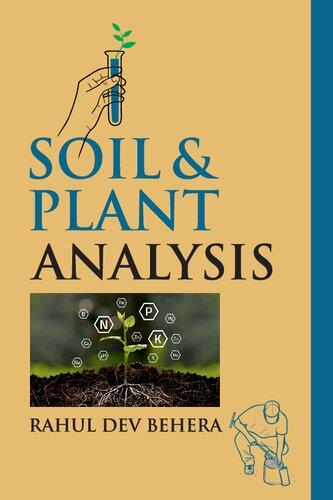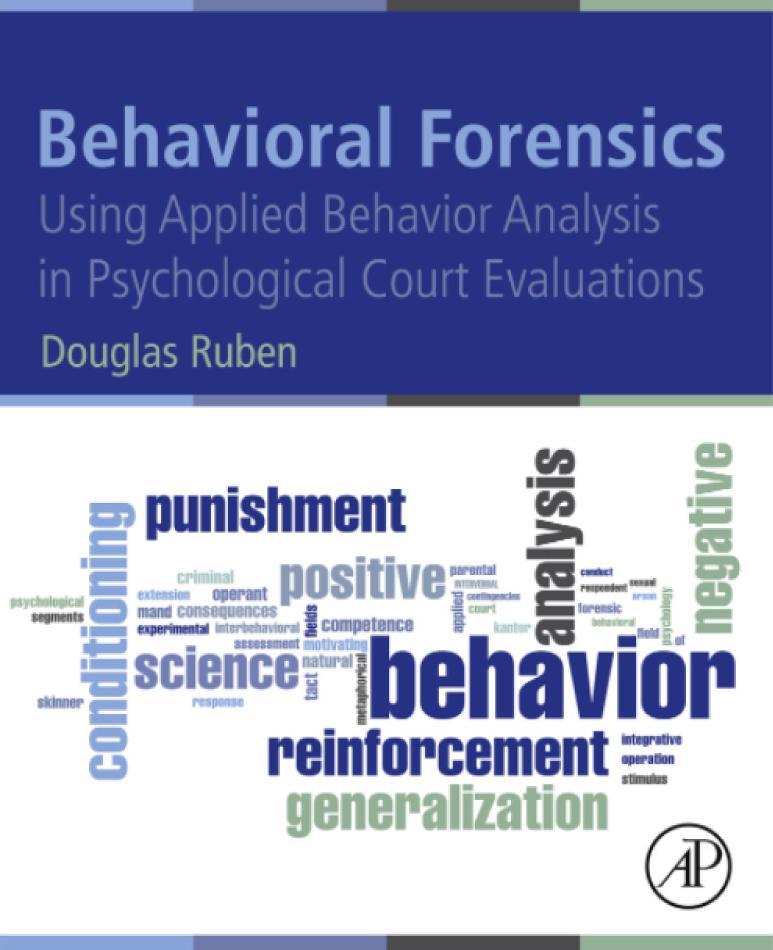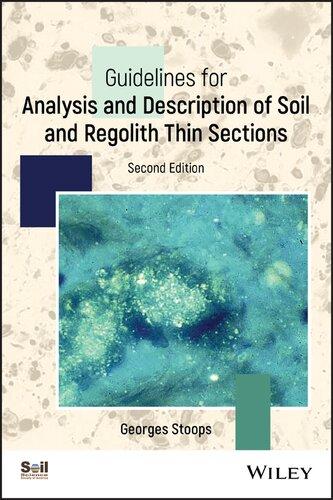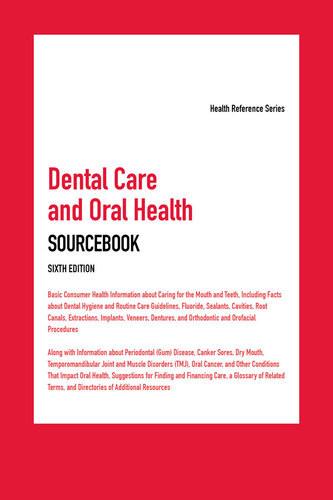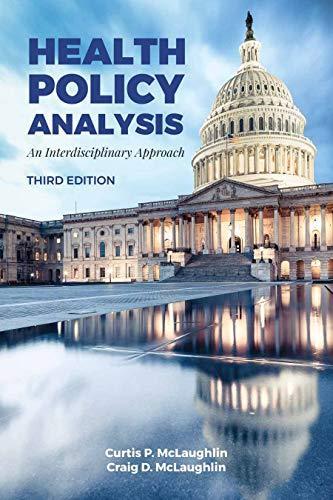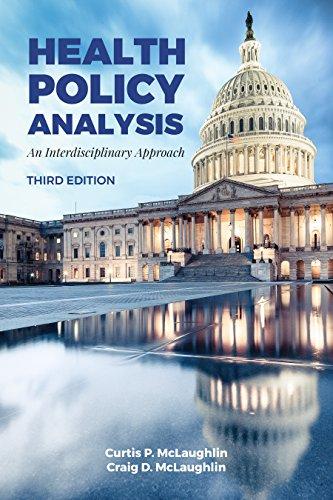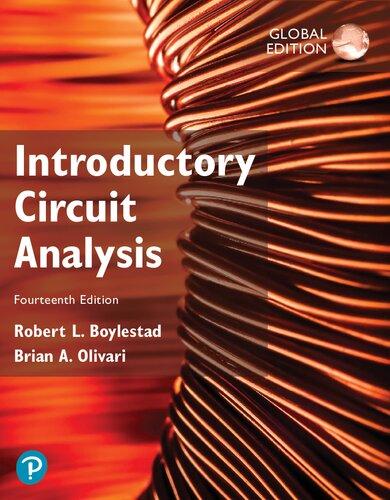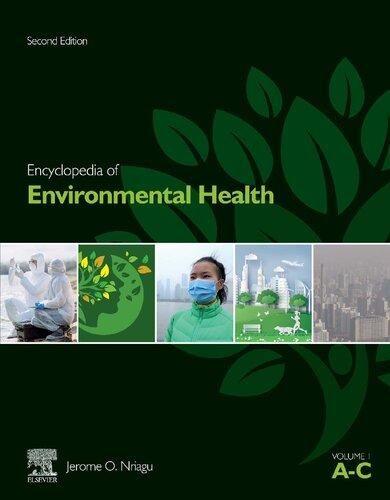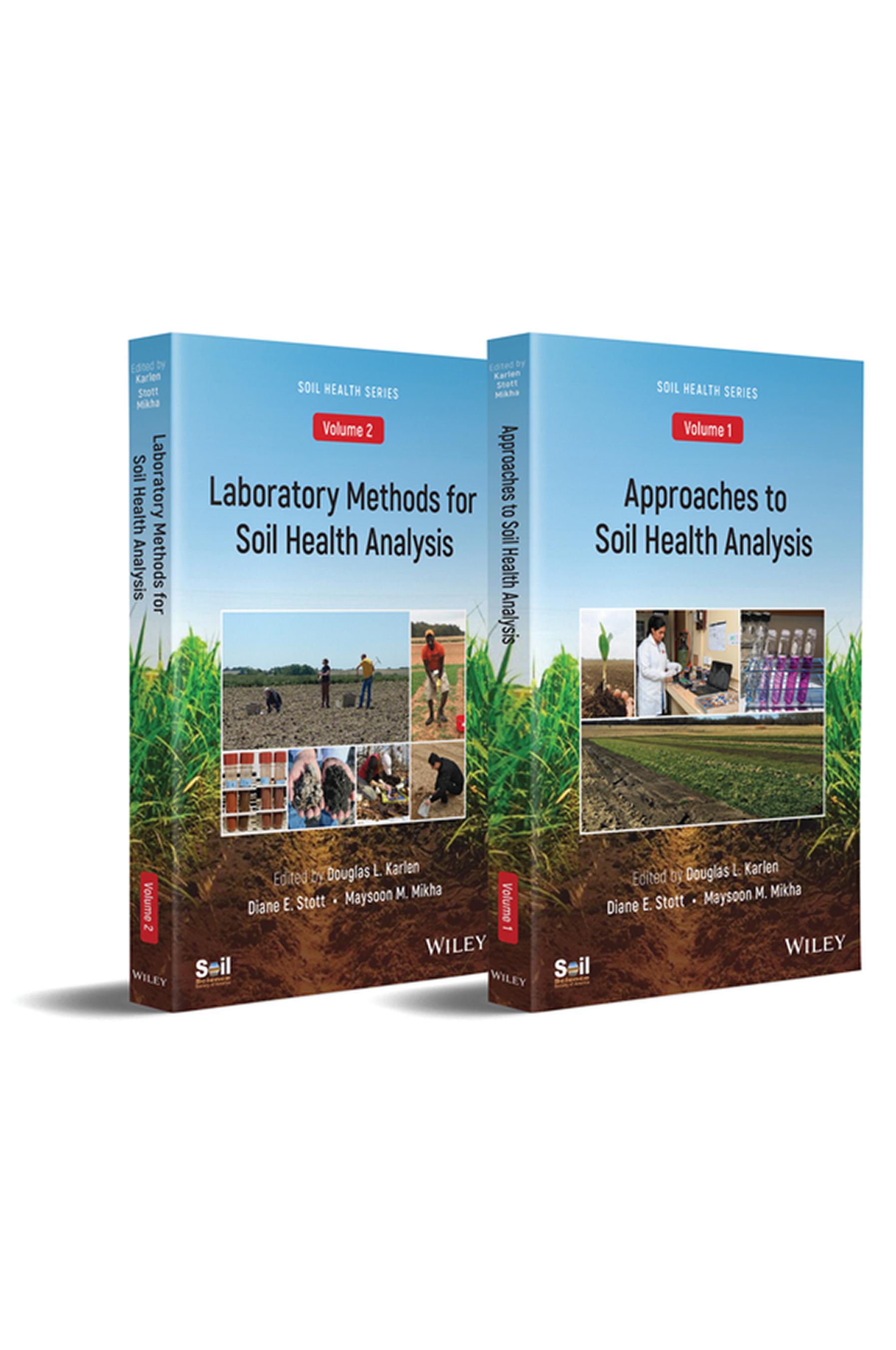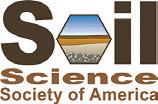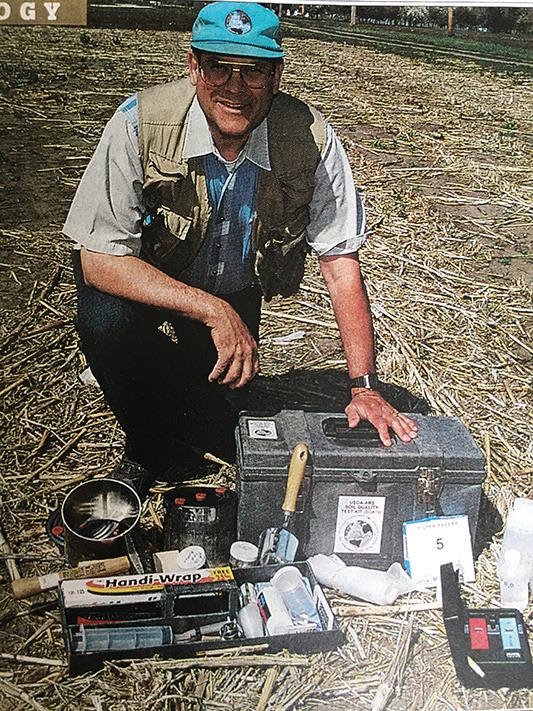Soil Health Series: Volume 1 Approaches to Soil Health Analysis
Edited by Douglas L. Karlen, Diane E. Stott, and Maysoon M. Mikha
Copyright © 2021 © Soil Science Society of America, Inc. All rights reserved. Copublication by © Soil Science Society of America, Inc. and John Wiley & Sons, Inc.
No part of this publication may be reproduced, stored in a retrieval system, or transmitted in any form or by any means electronic, mechanical, photocopying, recording, scanning, or otherwise, except as permitted by law. Advice on how to reuse material from this title is available at http://wiley.com/go/permissions.
The right of Douglas L. Karlen, Diane E. Stott, and Maysoon M. Mikha to be identified as the authors of the editorial material in this work has been asserted in accordance with law.
Limit of Liability/Disclaimer of Warranty
While the publisher and author have used their best efforts in preparing this book, they make no representations or warranties with respect to the accuracy of completeness of the contents of this book and specifically disclaim any implied warranties or merchantability of fitness for a particular purpose. No warranty may be created or extended by sales representatives or written sales materials. The publisher is not providing legal, medical, or other professional services. Any reference herein to any specific commercial products, procedures, or services by trade name, trademark, manufacturer, or otherwise does not constitute or imply endorsement, recommendation, or favored status by the SSSA. The views and opinions of the author(s) expressed in this publication do not necessarily state or reflect those of SSSA, and they shall not be used to advertise or endorse any product.
Editorial Correspondence:
Soil Science Society of America, Inc. 5585 Guilford Road, Madison, WI 53711-58011, USA soils.org
Registered Offices:
John Wiley & Sons, Inc., 111 River Street, Hoboken, NJ 07030, USA
For details of our global editorial offices, customer services, and more information about Wiley products, visit us at www.wiley.com.
Wiley also publishes its books in a variety of electronic formats and by print-on-demand. Some content that appears in standard print versions of this book may not be available in other formats.
Library of Congress Cataloging-in-Publication Data applied for Paperback: 9780891189800 doi: 10.2136/soilhealth.vol1
Cover Design: Wiley
Cover Image: © Joshua Miller, DPH, PhD, Steve Culman, Timothy Clough, Pedro Ferrari Machado, Negar Tafti
Set in 9.5/12.5pt STIXTwoText by Straive, Pondicherry, India
Dedication
These books are dedicated to Dr. John W. Doran, a retired USDA-ARS (Agricultural Research Service) Research Soil Scientist whose profound insight provided international inspiration to strive to understand the capacity of our fragile soil resources to function within ecosystem boundaries, sustain biological productivity, maintain environmental quality, and promote plant and animal health.
Understanding and quantifying soil health is a journey for everyone. Even for John, who early in his career believed soil quality was too abstract to be defined or measured. He initially thought soil quality was simply too dependent on numerous, uncontrollable factors, including land use decisions, ecosystem or environmental interactions, soil and plant management practices, and political or socioeconomic priorities. In the 1990s, John pivoted, stating he now recognized and encouraged the global soil science community to move forward, even though perceptions of what constitutes a good soil vary widely depending on individual priorities with respect to soil function. Continuing, he stated that to manage and maintain our soils in an acceptable state for future generations, soil quality (soil health) must be defined, and the definition must be broad enough to encompass the many facets of soil function.
John had profound impact on our careers and many others around the World. Through his patient, personal guidance he challenged everyone to examine soil biological, chemical, and physical properties, processes, and interactions to understand and quantify soil health. For Diane, this included crop residue and soil enzyme investigations, and for Maysoon, interactions between soil physical and biological processes mediated by water-filled pore space. Recognizing my
knowledge of soil testing and plant analysis on Midwestern soils, as well as rootlimiting, eluviated horizons and soil compaction in Southeastern U.S. soils, John encouraged me to develop a strategy to evaluate and combine the biological, chemical, and physical indicators that have become pillars for soil quality/health assessment. The Soil Management Assessment Framework (SMAF) was the first generation outcome of this challenge.
Throughout his life, John endeavored to involve all Earth’s people, no matter their material wealth or status, in translating their lifestyles to practices that strengthen social equity and care for the earth we call home. Through development of the “soil quality test kit” John fostered transformation of soil quality into soil health by taking his science to farmers, ranchers, and other land managers. These two volumes have been prepared with that audience in mind to reflect the progress made during the past 25 years. Special thanks are also extended to John’s life mate Janet, daughter Karin, son-in-law Michael, grandchildren Drew and Fayth, and all of his friends for their encouragement, patience and support as he continues his search for the “holy grail” of soil health. Without John’s inspiration and dedication, who knows if science and concern for our fragile soil resources would have evolved as it has.
Thank you, John – you are an inspiration to all of us!
Contents
Foreword ix
Preface xiii
1 Soil Health: An Overview and Goals for These Volumes 1
Douglas L. Karlen, Diane E. Stott, Maysoon M. Mikha, and Bianca N. Moebius-Clune
2 Evolution of the Soil Health Movement 21
Douglas L. Karlen, Mriganka De, Marshall D. McDaniel, and Diane E. Stott
3 The Utility and Futility of Soil Health Assessment 49
John F. Obrycki and Lumarie Pérez-Guzmán
4 Metadata: An Essential Component for Interpreting Soil Health Measurements 70
Jane M.-F. Johnson and Maysoon M. Mikha
5 Soil Health Assessment of Agricultural Lands 79
Diane E. Stott, Brian Wienhold, Harold van Es, and Jeffrey E. Herrick
6 Soil Health Assessment of Forest Soils 100
Deborah S. Page-Dumroese, Felipe G. Sanchez, Ranjith P. Udawatta, Charles (Hobie) Perry, and Grizelle González
7 A Risk-Based Soil Health Approach to Management of Soil Lead 139
Nicholas T. Basta, Alyssa M. Zearley, Jeffory A. Hattey, and Douglas L. Karlen
8 The Future of Soil Health Assessments: Tools and Strategies 169
Kristen S. Veum, Marcio R. Nunes, and Ken A. Sudduth
Epilogue 199
Foreword
Soil science receives increasing attention by the international policy arena and publication of this comprehensive “Soil Health” book by the Soil Science Society of America (SSSA) and Wiley International is therefore most welcome at this point in time. Striving for consensus on methods to assess soil health is important in positioning soil science in a societal and political discourse that, currently, only a few other scientific disciplines are deeply engaged in. Specifically, increasing the focus on sustainable development provides a suitable “point on the horizon” that provides a much needed focus for a wide range of activities. Sustainable development has long been a likeable, but still rather abstract concept. The United Nations General Assembly acceptance of seventeen Sustainable Development Goals (SDGs) by 193 Governments in 2015 changed the status of sustainable development by not only specifying the goals but also defining targets, indicators, and seeking commitments to reach those goals by 2030 (https://www.un.org/ sustainabledevelopment-goals). In Europe, the Green Deal, accepted in 2019, has targets and indicators corresponding to those of the SDGs (https://ec.europa.eu/ info/strategy/european-green-dealsoil).
So far, soil scientists have not been actively engaged in defining SDG targets, which is unfortunate considering soil functions contribute significantly to ecosystem services that, in turn, contribute to the SDGs. The connections are all too obvious for soil scientists, but not necessarily so for scientists in other disciplines, politicians, or the public at large. For example, adequate production of food (SDG2) is impossible without healthy soil. Ground- and surface-water quality (SDG6) are strongly influenced by the purifying and infiltrative capacities of soils. Carbon capture through increases in soil organic carbon (SOC) is a major mechanism contributing to the mitigation of an increasingly variable climate (SDG13) and living soils as an integral part of living landscapes are a dominant source of biodiversity (SDG15) (Bouma, 2014; Bouma et al., 2019). With complete certainty, we can show that healthy soils make better and more effective contributions to ecosystem services than unhealthy ones! This also applies when considering the
Foreword x
recently introduced Soil Security concept, which articulates the 5 C’s: soil capability, condition, capital, connectivity, and codification (Field et al., 2017). A given soil condition can be expressed in terms of soil health, whereas soil capability defines potential conditions, to be achieved by innovative soil management, thus increasing soil health to a characteristically attainable level for that particular soil. Healthy soils are a capital asset for land users; connectivity emphasizes interactions among land users, citizens, and politicians that are obviously important, especially when advocating measures to increase soil health that may initially lack societal support. Finally, codification is important because future land use rules and regulations could benefit by being based on quantitative soil health criteria, thus allowing a reproducible comparison between different soils.
These volumes provide an inspiring source of information to further evaluate the soil health concept, derive quantitative procedures that will allow more effective interaction among land users, and information needed to introduce soil science into laws and regulations. The introductory chapters of Volume 1 present a lucid and highly informative overview of the evolution of the soil health movement. Other chapters discuss data needs and show that modern monitoring and sensing techniques can result in a paradigm shift by removing the traditional data barriers. Specifically, these new methods can provide large amounts of data at relatively low cost. The valuable observation is made that systems focusing only on topsoils cannot adequately represent soil behavior in space and time. Subsoil properties, expressed in soil classification, have significant and very important effects on many soil functions. Numerous physical, chemical and biological methods are reviewed in Volume 2. Six chapters deal with soil biological methods, correctly reflecting the need to move beyond the traditional emphasis on physical and chemical assessment methods. After all, soils are very much alive!
The book Soil Health nicely illustrates the “roots” of the soil health concept within the soil science profession. It also indicates the way soil health can provide “wings” to the profession as a creative and innovative partner in future environmental research and innovation.
Johan Bouma Emmeritus Professor of Soil Science Wageningen University
The
Netherlands
References
Bouma, J. (2014). Soil science contributions towards Sustainable Development Goals and their implementation: Linking soil functions with ecosystem services. J. Plant Nutr. Soil Sci. 177(2), 111–120. doi:10.1002/jpln.201300646
Bouma, J., Montanarella, L., and Vanylo, G.E. (2019). The challenge for the soil science community to contribute to the implementation of the UN Sustainable Development Goals. Soil Use Manage. 35(4), 538–546. doi:10.1111/sum.12518
Field, D.J., Morgan, C.L.S., and Mc Bratney, A.C., editors. (2017). Global soil security. Progress in Soil Science. Springer Int. Publ., Switzerland. doi:10.1007/978-3-319-43394-3
Preface
This two-volume series on Soil Health was written and edited during a very unique time in global history. Initiated in 2017, it was intended to simply be an update for the “Blue” and “Green” soil quality books entitled Defining Soil Quality for a Sustainable Environment and Methods for Assessing Soil Quality that were published by the Soil Science Society of America (SSSA) in the 1990s. In reality, the project was completed in 2020 as the United States and world were reeling from the Covid-19 coronavirus pandemic, wide-spread protest against discriminatory racial violence, and partisan differences between people concerned about economic recovery versus protecting public health.
Many factors have contributed to the global evolution of soil health as a focal point for protecting, improving, and sustaining the fragile soil resources that are so important for all of humanity. Building for decades on soil conservation principles and the guidance given by Hugh Hammond Bennett and many other leaders associated with those efforts, soil health gradually is becoming recognized by many different segments of global society. Aligned closely with soil security, improving soil health as a whole will greatly help the United Nations (UN) achieve their Sustainable Development Goals (SDGs). Consistent with soil health goals, the SDGs emphasize the significance of soil resources for food production, water availability, climate mitigation, and biodiversity (Bouma, 2019).
The paradox of completing this project during a period of social, economic, and anti-science conflicts associated with global differences in response to Covid-19, is that the pandemic’s impact on economic security and life as many have known it throughout the 20th and early 21st centuries is not unique. Many of the same contentious arguments could easily be focused on humankind’s decisions regarding how to use and care for our finite and fragile soil resources. Soil conservation leaders such as Hugh Hammond Bennett (1881–1960), “Founder of Soil Conservation,” W. E. (Bill) Larson (1921–2013) who often stated that soil is “the thin layer covering the planet that stands between us and starvation,” and many current conservationists can attest that conflict regarding how to best use soil
resources is ancient. Several soil science textbooks, casual reading books, and other sustainability writings refer to the Biblical link between soil and humankind, specifically that the very name “Adam” is derived from a Hebrew noun of feminine gender (adama) meaning earth or soil (Hillel, 1991). Furthermore, Xenophon, a Greek historian (430–355 BCE) has been credited with recording the value of green-manure crops, while Cato (234–149 BCE) has been recognized for recommending the use of legumes, manure, and crop rotations, albeit with intensive cultivation to enhance productivity. At around 45 CE, Columella recommended using turnips (perhaps tillage radishes?) to improve soils (Donahue et al., 1971). He also suggested land drainage, application of ash (potash), marl (limestone), and planting of clover and alfalfa (N fixation) as ways to make soils more productive. But then, after Rome was conquered, scientific agriculture, the arts, and other forms of culture were stymied.
Advancing around 1500 yr, science was again introduced into agriculture through Joannes Baptista Van Helmont’s (1577–1644 CE) experiment with a willow tree. Although the initial data were misinterpreted, Justice von Liebig (1803–1873 CE) eventually clarified that carbon (C) in the form of carbon dioxide (CO2) came from the atmosphere, hydrogen and oxygen from air and water, and other essential minerals to support plant growth and development from the soil. Knowledge of soil development, mineralogy, chemistry, physics, biology, and biochemistry as well as the impact of soil management (tillage, fertilization, amendments, etc.) and cropping practices (rotations, genetics, varietal development, etc.) evolved steadily throughout the past 150 yr. SO, what does this history have to do with these 21st Century Soil Health books?
First, in contrast to the millennia throughout which humankind has been forewarned regarding the fragility of our soil resources, the concept of soil health (used interchangeably with soil quality) per se, was introduced only 50 yr ago (Alexander, 1971). This does not discount outstanding research and technological developments in soil science such as the physics of infiltration, drainage, and water retention; chemistry of nutrient cycling and availability of essential plant nutrients, or the biology of N fixation, weed and pest control. The current emphasis on soil health in no way implies a lack of respect or underestimation of the impact that historical soil science research and technology had and have for solving problems such as soil erosion, runoff, productivity, nutrient leaching, eutrophication, or sedimentation. Nor, does it discount contributions toward understanding and quantifying soil tilth, soil condition, soil security, or even sustainable development. All of those science-based accomplishments have been and are equally important strategies designed and pursued to protect and preserve our fragile and finite soil resources. Rather, soil health, defined as an integrative term reflecting the “capacity of a soil to function, within land use and ecosystem boundaries, to sustain biological productivity, maintain environmental quality, and promote
plant animal, and human health” (Doran and Parkin, 1994), is another attempt to forewarn humanity that our soil resources must be protected and cared for to ensure our very survival. Still in its infancy, soil health research and our understanding of the intricacies of how soils function to perform numerous, and at times conflicting goals, will undoubtedly undergo further refinement and clarification for many decades.
Second, just like the Blue and Green books published just twenty years after the soil health concept was introduced, these volumes, written after two more decades of research, continue to reflect a “work in progress.” Change within the soil science profession has never been simple as indicated by Hartemink and Anderson (2020) in their summary reflecting 100 yr of soil science in the United States. They stated that in 1908, the American Society of Agronomy (ASA) established a committee on soil classification and mapping, but it took 6 yr before the first report was issued, and on doing so, the committee disbanded because there was no consensus among members. From that perspective, progress toward understanding and using soil health principles to protect and preserve our fragile soil resources is indeed progressing. With utmost gratitude and respect we thank the authors, reviewers, and especially, the often-forgotten technical support personnel who are striving to continue the advancement of soil science. By developing practices to implement sometimes theoretical ideas or what may appear to be impossible actions, we thank and fully acknowledge all ongoing efforts. As the next generation of soil scientists, it will be through your rigorous, science-based work that even greater advances in soil health will be accomplished.
Third, my co-authors and I recognize and acknowledge soil health assessment is not an exact science, but there are a few principles that are non-negotiable. First, to qualify as a meaningful, comprehensive assessment, soil biological, chemical, and physical properties and processes must all be included. Failure to do so, does not invalidate the assessment, but rather limits it to an assessment of “soil biological health”, “soil physical health”, “soil chemical health”, or some combination thereof. Furthermore, although some redundancy may occur, at least two different indicator measurements should be used for each indicator group (i.e., biological, chemical, or physical). To aid indicator selection, many statistical tools are being developed and evaluated to help identify the best combination of potential measurements for assessing each critical soil function associated with the land use for which an evaluation is being made.
There is also no question that any soil health indicator must be fundamentally sound from all biological, chemical, physical and/or biochemical analytical perspectives. Indicators must have the potential to be calibrated and provide meaningful information across many different types of soil. This requires sensitivity to not only dynamic, management-induced forces, but also inherent soil properties and processes reflecting subtle differences in sand, silt, and clay size particles
derived from rocks, sediments, volcanic ash, or any other source of parent material. Soil health assessments must accurately reflect interactions among the solid mineral particles, water, air, and organic matter contained within every soil. This includes detecting subtle changes affecting runoff, infiltration, and the soil’s ability to hold water through capillarity– to act like a sponge; to facilitate gas exchange so that with the help of CO2, soil water can slowly dissolve mineral particles and release essential plant nutrients– through chemical weathering; to provide water and dissolved nutrients through the soil solution to plants, and to support exchange between oxygen from air above the surface and excess CO2 from respiring roots.
Some, perhaps many, will disagree with the choice of indicators that are included in these books. Right or wrong, our collective passion is to start somewhere and strive for improvement, readily accepting and admitting our errors, and always being willing to update and change. We firmly believe that starting with something good is much better than getting bogged down seeking the prefect. This does not mean we are discounting any fundamental chemical, physical, thermodynamic, or biological property or process that may be a critical driver influencing soil health. Rather through iterative and ongoing efforts, our sole desire is to keep learning until soil health and its implications are fully understood and our assessment methods are correct. Meanwhile, never hesitate to hold our feet to the refining fire, as long as collectively we are striving to protect and enhance the unique material we call soil that truly protects humanity from starvation and other, perhaps unknown calamities, sometimes self-induced through ignorance or failing to listen to what our predecessors have told us.
Douglas
L. Karlen (Co-Editor)
References
Alexander, M. (1971). Agriculture’s responsibility in establishing soil quality criteria In: Environmental improvement– Agriculture’s challenge in the Seventies Washington, DC: National Academy of Sciences. p. 66–71.
Bouma, J. (2019). Soil security in sustainable development. Soil Systems. 3:5. doi:10.3390/soilsystems3010005
Donahue, R. L., J. C. Shickluna, and L. S. Robertson. 1971). Soils: An introduction to soils and plant growth. Englewood Cliffs, N.J.: Prentice Hall, Inc.
Doran, J.W., Coleman, D.C., Bezdicek, D.F., and Stewart, B.A., editors. (1994). Defining soil quality for a sustainable environment. Soil Science Society of America (SSSA) Special Publication No. 35. Madison, WI: SSSA Inc.
Doran, J.W., and Parkin, T.B. (1994). Defining and assessing soil quality. In: J.W. Doran, D.C. Coleman, D.F. Bezdicek, and B.A. Stewart, editors, Defining soil
Preface
quality for a sustainable environment. SSSA Special Publication No. 35. Madison, WI: SSSA. p. 3–21. doi:10 2136/sssaspecpub35
Doran, J.W., and Jones, A.J. (eds.). (1996). Methods for assessing soil quality. Soil Science Society of America (SSSA) Special Publication No. 49. Madison, WI: SSSA Inc.
Hartemink, A. E. and Anderson, S.H. (2020). 100 years of soil science society in the U.S. CSA News 65(6), 26–27. doi:10.1002/csann.20144
Hillel, D. (1991). Out of the earth: Civilization and the life of the soil. Oakland, CA: University of California Press.
Soil Health: An O verview and G oals for T hese Volumes
Douglas L. Karlen*, Diane E. Stott, Maysoon M. Mikha, and Bianca N. Moebius-Clune
Synopsis of Two-Volume Book
Farmers and ranchers, private sector businesses, non-governmental organizations (NGOs), academic-, state-, and federal-research projects, as well as state and federal soil conservation, water quality and other environmental programs have begun to adopt soil health as a unifying goal and promote it through workshops, books, and public awareness meetings and campaigns. The driver is an increased awareness that soil resources are crucial for not only meeting global demand for high-quality food, feed, and fiber but also to help mitigate more extreme weather events and to protect water and air quality, wildlife habitat, and biodiversity.
Volume 1 briefly reviews selected “Approaches to Soil Health Analysis” including a brief history of the concept, challenges and opportunities, meta-data and assessment, applications to forestry and urban land reclamation, and future soil health monitoring and evaluation approaches.
Volume 2 focuses on “Laboratory Methods for Soil Health Analysis” including an overview and suggested analytical approaches intended to provide meaningful, comparable data so that soil health can be used to guide restoration and protection of our global soil resources.
* Disclaimer: Mention of names or commercial products in this document does not imply recommendation or endorsement by the U.S. Department of Agriculture.
Soil Health Series: Volume 1 Approaches to Soil Health Analysis, First Edition.
Edited by Douglas L. Karlen, Diane E. Stott, and Maysoon M. Mikha.
© 2021 Soil Science Society of America, Inc. Published 2021 by John Wiley & Sons, Inc.
Introduction
Soil health research, books, workshops, websites, press releases, and other forms of technology transfer materials have made rural and urban producers and consumers of all ages more aware of soil resources and the services they provide. Innovative farmers and ranchers, the private sector, non-governmental organizations (NGOs), academic, state, and federal researchers, and policymakers around the world are becoming more aware of how properly functioning soils more effectively respond to: (1) changing climate patterns and more extreme weather events (Paustian et al., 2016); (2) increasing demands for abundant, high-quality food, feed, and fiber to meet needs of an increasing global population (Doran, 2002), and (3) the need to protect water, air, wildlife, plant, and microbial biodiversity (Andrén & Balandreau, 1999; Havlicek & Mitchell, 2014).
Enhancing global soil health will improve humankind’s capacity to maintain or increase crop yield, achieve better yield stability, reduce purchased input costs, and enhance critical ecosystem services (Boehm & Burton, 1997). Striving for improved soil health is not only important for croplands, but also for pastures, native rangelands, orchards, and forests (Herrick et al., 2012; Chendev et al., 2015; Gelaw et al., 2015; Vitro et al., 2015). Yet, there is still a lot of confusion and uncertainty regarding soil health in the U.S. and around the world. One reason is that soils are complex and perform many different functions that respond to changes in the same properties and processes in different and sometimes conflicting ways. For example, what may be considered good soil health characteristics for crop productivity (e.g., well aggregated, porous with good water infiltration, efficient nutrient cycling) may not be optimum for water quality if high infiltration rates and/or macropores result in rapid transport of contaminants to surface or subsurface water resources. Similarly, no-tillage as a single practice may improve soil health by increasing soil organic carbon (SOC), but improper management decisions (e.g., timing, equipment size, lack of living roots) or unanticipated weather patterns (e.g., multiple freeze–thaw cycles) may increase compaction and runoff compared to using a moderate fall tillage operation. For those reasons, soil health assessment and management must always be holistic, striving to balance tradeoffs, and accounting for biological, chemical, and physical property and process changes to be useful and meaningful for regenerative and sustainable soil management and protection of our fragile resources.
The concept of soil health is not new (see Figure 2.1 of Chapter 2). It has evolved from both indigenous knowledge derived over millennia through trial and error, and over a century of soil and agronomic research focused on soil management,
soil conservation, soil condition, soil quality, soil tilth, soil security, and similar topics. Fundamental roots of soil health principles can be traced to the time of Plato (Hillel, 1991) and Columella, a prominent writer about agriculture within the Roman Empire (~40 to 60 BCE). Current soil health efforts reflect the enormous efforts given by people such as Hugh Hammond Bennett, founder of the Soil Conservation Service (SCS) now known as the Natural Resources Conservation Service (NRCS). Soil health activities can be traced to soil conservation efforts implemented in response to the Dust Bowl and other natural events. As a result, it has become a mantra to focus people’s attention on the soil beneath their feet (Carter et al., 1997; Montgomery, 2007). Unfortunately, as acknowledged 25 yr ago (Doran and Jones, 1996), soil health was and continues (Chapter 3) to be a controversial topic.
Many current soil health activities began to emerge in the 1970s (Alexander, 1971). In part, they were accelerated by the 1973 U.S. oil embargo which increased energy and nitrogen (N) fertilizer prices (Warkentin & Fletcher, 1977). Escalating N fertilizer prices led to renewed interest among soil and agronomic researchers regarding how the soil microbial community might be enhanced to help supply crop-available N rather than continuing to depend on costly fertilizer inputs (Gregorich & Carter, 1997; Tilman, 1998). The Food Security Act of 1985 also introduced new incentives to encourage producers to implement minimum- or no-tillage conservation practices to reduce soil erosion, thus increasing farmer and society focus on the importance of soils for producing the food and fiber humans need and. For maintaining the ecosystems on which all life ultimately depends (National Research Council, 1993).
In contrast to soil quality efforts during the 1990s and early 2000s, a major driver of soil health projects from 2011 to 2020 has been investment by private industry. This can be partially explained by the rapid increase in corporate social responsibility reporting between 2011 and 2020 (Sustainability Reports, 2019). Consumer demand and sustainable, responsible shareholder investment pressures have driven this increase in reporting—which has created a corporate need for transparency in the environmental impact from agricultural production systems.
Increased public awareness of soil health has opened avenues to productive partnerships between industry, governmental, grower and conservation organizations due to the ability to create win-win-win scenarios between farm economic, environmental improvement (e.g., water quality, greenhouse gas emissions, biodiversity) and social outcomes (e.g., AgSolver and EFC Systems development of ‘Profit Zone Manager’ and its incorporation into the FieldAlytics platform for field data management; ANTARES– Enabling Sustainable Landscape Design
project linking soil health and the continual improvement of sustainable operating bioenergy supply systems).
A leader in building public-private-partnerships focused on soil was the Soil Renaissance which was initiated to reawaken public interest and awareness of the importance of soil health in vibrant, profitable and sustainable natural resource systems. Founded as a Farm Foundation and Noble Research Institute collaboration, it sought to make maintenance and improvement of soil health (https://www.farmfoundation.org/projects/the-soil-renaissance-knowledge-tosustain-earths-most-valuable-asset-1873-d1/) the cornerstone of land use management. The Soil Health Partnership (SHP) (https://www.soilhealthpartnership. org/science/) initiated by the National Corn Growers Association (NCGA), Walton Family Foundation, Monsanto (Bayer), Environmental Defense Fund (EDF) and the Nature Conservancy (TNC) in 2014 was another leader. Soil Renaissance endeavors have been carried on through the formation of the Soil Health Institute which has provided leadership for a North American project to evaluate soil health measurements (Norris et al., 2020). Meanwhile, the SHP has focused on using science and data to work directly with farmers to adopt practical agricultural practices including (i) cover crops, (ii) conservation tillage, and (iii) advanced nutrient management to improve the economic and environmental sustainability of the farm. Administered by the NCGA, the partnership has more than 220 working farms enrolled in 15 states and one Canadian province. Collectively SHP, SHI, and other regional, state and local partnerships have created an exponential increase in recognition and adoption of soil and crop management practices that can protect, improve, and sustain our fragile soil, water, and air resources.
Many additional soil health projects, partnerships, and investment opportunities have arisen across the United States (e.g., The Wells Fargo Innovation Incubator, or IN2, The Soil Coalition initiated by Rabobank, a.s.r. and Vitens, and S2G Ventures). The IN2, a technology incubator and platform co-administered by the U.S. Department of Energy’s National Renewable Energy Laboratory (NREL), was initiated with six startups focused on agriculture technology solutions, while S2G’s portfolio companies are on a mission to better align the food system to meet changing consumer demands. Collectively, these partnerships and projects have sent farmer and consumer market demand signals across the entire agricultural supply chain. Subsequently, soil health products and services have followed the market demand signals. For example: General Mills now brands products with information regarding soil health and carbon sequestration (General Mills, 2020); BASF began focusing on soil health when they launched Poncho Votivo 2.0 a treatment designed to protect corn seeds and increase microbial activity in the soil (BASF, 2020); and Nutrien Ltd, an agricultural retail company that distributes
potash, nitrogen, and phosphate products worldwide for agricultural, industrial, and feed customers. Nutrien which serves the agriculture industry worldwide, purchased Waypoint Analytical, Inc.—a soil science company—in 2018 to expand soil health analyses for farmers (Nutrien Ltd., 2018). These investments as well as those by the Environmental Defense Fund (EDF), Midwest Row Crop Collaborative (MWRCC), National Wheat Foundation, Foundation for Food and Agriculture Research (FFAR), Natural Resources Conservation Service (NRCS), Minnesota Corn Growers Association, and Iowa Corn Growers Association at the regional, state and local level have created partnerships supporting an exponential increase in recognition and adoption of soil and crop management practices that can protect, improve, and sustain our fragile soil, water, and air resources.
Historically, a significant soil health development during the 1980s and 1990s was the Canadian publication entitled “The Health of Our Soil” (Acton & Gregorich, 1995) which was one of the first broad-scale, organized efforts to provide land managers information on implementing SH-improving practices. Following those Canadian efforts, several U.S. soil scientists developed a definition of soil quality and recommended assessment methods to characterize how tillage and other crop management decisions were affecting soil resources (e.g., Doran et al., 1994; Doran & Jones, 1996; Karlen et al., 1997). The importance of soil biology was recognized as integral to improving the understanding and measurement of soil quality, but optimum methods to assess soil microbial communities were still being developed (Pankhurst et al., 1997). As the capacity to quantify soil biology indicators improved, discussions of SQ were replaced by the term soil health which was used to communicate to both producers and consumers the importance of understanding and managing soil as a living ecosystem. Consistent with that messaging, the NRCS ultimately defined soil health as “the continued capacity of the soil to function as a vital living ecosystem that supports plants, animals, and humans” (USDA-NRCS, 2019a).
The purpose and scope for this two-volume series (I. Approaches to Soil Health Analysis and II. Laboratory Methods for Soil Health Assessment) are to review advancements in soil health since Defining Soil Quality for a Sustainable Environment (Doran et al., 1994) and Methods for Assessing Soil Quality (Doran & Jones, 1996) were published 25 yr ago. Our goal for Volume 1 is to provide agricultural and conservation communities an update that will help identify appropriate soil health indicators for various soil processes important for agriculture, forest, and reclamation functions. Volume 2 provides standardized, science-based guidelines for sampling and procedures for assessing soil organic carbon (SOC), aggregate stability and compaction, pH and salinity, nutrient availability, as well as microbial processes, diversity, and community structure. Numerous scientific publications and technical outreach activities have contributed to the evolution of
soil health and are cited in the various chapters. Four relatively recent examples are Basche and DeLonge (2017) who focus on soil hydrologic effects of continuous living covers, Congreves et al. (2015) who reported on long-term impacts of tillage and crop rotations on soil health, McDaniel et al. (2014) who used a meta-analysis to examine crop diversity effects on soil microbial biomass and soil organic matter (SOM) dynamics, and Turmel et al. (2015) who quantified crop residue management effects on soil health. Collectively, the information in those publications and numerous others can and will be used to produce consistent meaningful guidelines that can be understood and used by producers to improve their long-term soil and crop management practices. This two-volume series is also intended to help producers and land managers more fully understand their soil’s response to human management. This is essential to move beyond current, broadly available soil-testing methods that generally focus only on chemical extractions to assess nutrient status and make nutrient management recommendations.
Why is Soil Health Important?
Investing in regenerating, improving, or sustaining soil health will result in a broad array of benefits for producers and the public. Those benefits include: carbon sequestration and potential mitigation of and adaptation to climate change; increased soil organic carbon (SOC) stocks; increased water infiltration, storage, and availability to plants; reduced runoff, water-induced soil erosion, and flooding; more efficient nutrient cycling and pest suppression; reduced need for agricultural inputs; protection of groundwater, surface water, and air resources, including reduced dust storm events; increased biodiversity and resilience; longterm economic viability; and perhaps most importantly, food security, defined as sustained, reliable productivity needed to provide the food, feed, fiber, and fuel resources for an increasing world population (Glæsner et al., 2014; DeLong et al., 2015; Lal, 2015).
Aggressively pursuing continued advancement of publicly available soil health testing is critical because current chemical-based soil-testing approaches do not provide a complete view of the soil physical, chemical, and biological interactions and constraints that influence overall soil function. Fortunately, over the last four decades, laboratory methods have been developed and refined for studying, quantifying, and monitoring biological and physical indicators. This makes it possible to use a combination of field observations and laboratory tests to identify factors affecting a variety of soil, water, air, and plant resource concerns.
Many new biological and physical soil health assessment methods are still being refined and validated by the research community, but several indicators and laboratory methods are gradually becoming available through agricultural
soil testing laboratories for assessing how well soil processes are functioning. Technical Note 450–03 (USDA-NRCS, 2019b) was published by NRCS to provide recommendations reflecting current best available methods compiled through meetings and working groups involving more than 100 scientists who collaborated in multiorganizational workshops co-organized by USDA-NRCS Soil Health Division and members of the Soil Renaissance effort. The Technical Note laboratory methods are used as part of the Conservation Innovation Grants Soil Health Demonstration Trials minimum dataset and in a newly available Soil Testing Conservation Activity (CA 216) standard (USDANRCS, 2020c). Standardization of methods enables nationwide baseline measurements to be obtained that can be used for monitoring, and to guide soil and crop management when combined with a soil health assessment framework that provides soil and climate adapted interpretations of raw laboratory values. These book volumes are intended to summarize current best available methods and to identify gaps in our current understanding of soil health measurement and assessment. They are also intended to facilitate and increase in public awareness of soil health assessment and to provide insight and science-based methods for those evaluations. Furthermore, by encouraging soil health assessments, we hope these volumes will ultimately result in compilation of a national dataset that can be used to support multiple public and private soil health goals and document the value of public and private investments in such assessments.
While qualitative or semi-quantitative field observations can be used for preliminary identification of soil health constraints or to improve soil and crop management practices, identifying specific underlying causes and/or the management practices needed to address them, often requires quantitative laboratory analysis. We anticipate information in these volumes will be used by a wide group of stakeholders including producers, consultants, technical service providers, conservation planners, and other private and public agricultural service providers, conservation groups, researchers, industry, policymakers, and the general public. Uses will include: (1) identifying soil health problems and planning and implementing soil health management systems; (2) innovating, monitoring, and continually improving soil health management systems and their outcomes; and (3) leveraging diverse partnerships and efforts across multiple organizations and geographical scales for further research and innovation in soil health assessment and management at local, regional, national, and global scales through standardized datasets and sharing information for agricultural lands. Having meaningful, science-based soil health assessments is also important for planning, implementing, and managing conservation projects, establishing baselines, and documenting soil property and process changes over time to quantify outcomes of such projects.
Soil Health Indicators and Methods
Four main criteria have been developed by the soil health community of researchers, agricultural service providers, and practitioners to select indicators and methods for high-through-put soil test laboratories (Larson & Pierce, 1991; Mausbach & Seybold, 1998; Doran & Zeiss, 2000; Moebius et al., 2007; Norris et al., 2020):
1) Soil Health Indicator Effectiveness (short-term sensitivity to management, usefulness)
2) Production Readiness (ease of use, cost effectiveness for labs and producers)
3) Measurement Repeatability
4) Interpretability for agricultural management decisions (directionally understood, management influence known, regional potential ranges known, outcome thresholds).
These were developed using scientific literature and robust discussions in a series of workshops coordinated by the Farm Foundation and Noble Research Institute through the Soil Renaissance program between 2014 and 2016 (https:// www.farmfoundation.org/projects/the-soil-renaissance-knowledge-to-sustainearths-most-valuable-asset-1873-d1/). Understanding that soil health is a dynamic and evolving component of soil science, we recognize that both the indicators and methods recommended within these two volumes could change. Potential factors leading to changes may include identification of: (1) new or different critical soil processes, (2) more-responsive SH indicators, and/or (3) better methods of assessment. Furthermore, because of the dynamic nature of soil health assessment, we suggest information in these volumes be reviewed in three to 5 yr or a decade at most.
Need for Standardization
Once a suite of soil health indicators has been selected, standard methods for collecting and handling samples in the field, processing them in the laboratory, analyzing them, and interpreting the data are needed for monitoring and making appropriate comparisons (Doran & Parkin, 1994). This is especially true for biological assays which can be more sensitive to how soil samples are collected and processed prior to analysis than to subtle differences in the analytical methods themselves. Currently, soil health measurement protocols vary widely and can therefore lead to inconsistent results and slow progress toward widely validated interpretation. This challenge is best addressed by standardization of a minimum dataset of methods used across organizations that collaborate nationally to make progress on interpretation and science-based management recommendations (USDA-NRCS, 2019b). Thus, ongoing efforts among public-sector and commercial laboratories are needed to ensure preanalytical soil processing (i.e., degree of
aggregation, sieving, grinding, etc.) and analytical methods are standardized. As with all soil chemical measurements (e.g., pH, salinity, extractable N, phosphorus, and potassium), biological and physical indicators generally have large spatial and temporal variation. Care thus needs to be taken not only with sampling (i.e., compositing enough subsamples to make inferences about a sampled area) but also sampling methods (soil volume and depth), timing of collection (seasonal or annual), and the statistical methods used for interpretation.
Volume 2 is also intended to help reduce analytical variation in the measurement of soil health indicators. This is important because, as previously shown by the standardization of NRCS inherent soil property characterization methods, standardization makes large-scale data integration and comparisons feasible. Without rigorous standardization of soil health methods, variation among laboratories will hinder evaluation of changes over time and space and development of interpretations for various soil types and climate scenarios. This will in turn make regional and national compilations of soil health data very difficult to interpret.
Standardization of methods and protocols, along with appropriate proficiency testing, will facilitate collection of high-quality data with a high degree of interpretability, which is needed to facilitate development and use of regionallyappropriate interpretation functions (i.e., scoring algorithms). Those algorithms are needed to transform raw laboratory data into unitless (0 to 1) values that shows how well a specific soil is performing a production or environmental function. Such ratings can then be used for on farm management decision making. Private and public soil testing laboratories that use broadly standardized methods will therefore have the advantage of being able to offer broadly validated soil health testing and interpretation using functions and recommendations developed from a large dataset achieved through multiorganization public-private partnership contributions.
Interpretation of Soil Health Information
Several nationally appropriate tools, including the Revised Universal Soil Loss Equation (RUSLE), Soil Conditioning Index (SCI), Water Erosion Prediction Project (WEPP), Wind Erosion Prediction System (WEPS), AgroEcosystem Performance Assessment Tool (AEPAT), and Soil Management Assessment Framework (SMAF), have been developed to help interpret soil health related data (USDA-NRCS, 2019b). RUSLE2 estimates soil loss due to rill and inter-rill erosion caused by rainfall on cropland (Renard et al., 2011; USDA-ARS, 2015). The SCI combines information from the soil tillage intensity rating tool (STIR), a N-leaching index, and Version 2 of the Revised Universal Soil Loss Equation (RUSLE2) to provide information to producers regarding how their management decisions are affecting their soil resources and is widely used in NRCS
conservation planning. AEPAT is a research-oriented index methodology that ranks agroecosystem performance among management practices for chosen functions and indicators (Liebig et al., 2004; Wienhold et al., 2006). Water Erosion Prediction Project (WEPP) is a process-based, distributed parameter, continuous simulation, erosion prediction model for use on personal computers (USDAARS, 2017); Wind Erosion Prediction System (WEPS) predicts many forms of soil erosion by wind including saltation-creep and suspension (USDA-ARS, 2018). Without question, wind-, water-, and anthropogenic-induced soil erosion continues to be a global problem (Karlen & Rice, 2015) and must be the first factor mitigated to truly improve soil health, as it is an advanced symptom of degradation including loss of soil organism habitat, stable aggregation, and other critical soil functions.
Soil health indicator measurements, when coupled with an available assessment framework, complement soil erosion tools as they can directly and more definitively detect less advanced symptoms of soil health degradation across diverse management systems. Laboratory data, without field-level information can be difficult to interpret or use for management decisions, and should only be used when supplemented with qualitative, in-field assessments of SH and an understanding of the past and current management system in use.
Data collected over time from the same field can be used to monitor soil health, but this may take a long time to be of value to producers or organizations, as it requires establishing a baseline and sampling over a number of years. Use of soil health assessment frameworks allow single field indicator measurements to be interpreted and used for decision making by leveraging a wealth of research conducted over the last 50 yr and continued targeted data collection. The first such framework (SMAF;) was developed collaboratively between ARS and NRCS (Andrews et al., 2004). Stott et al. (2010) and Wienhold et al. (2009) improved the SMAF by providing additional indicator scoring curves, thus improving its utility for both crop and pasture lands. SMAF uses broad soil taxonomic groups (suborders) as a foundation for assessment and allows curve modification based on inherent soil suborder characteristics. This is often essential as a contextual basis for indicator interpretation.
By design, SMAF assessments are soil- and site-specific, because they depend on soil, climate, and human values such as intended land use, management goals, and environmental sensitivity. A purported SMAF strength is that all of those factors can be manipulated by the user (primarily researchers). This will cause subtle changes in the scoring curves, causing some to argue that is not an advantage because it makes the process too complex for producers and their service providers. The approach taken by the SMAF was thereafter adapted for high throughput, public laboratory soil health testing in New York State by Idowu et al. (2008). The Comprehensive Assessment of Soil Health (CASH) was designed to evaluate soil

